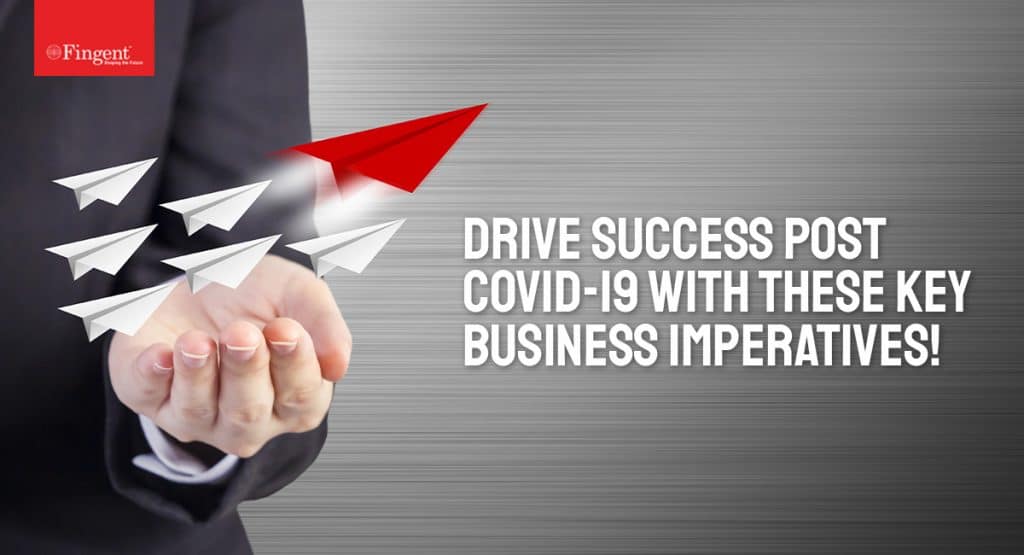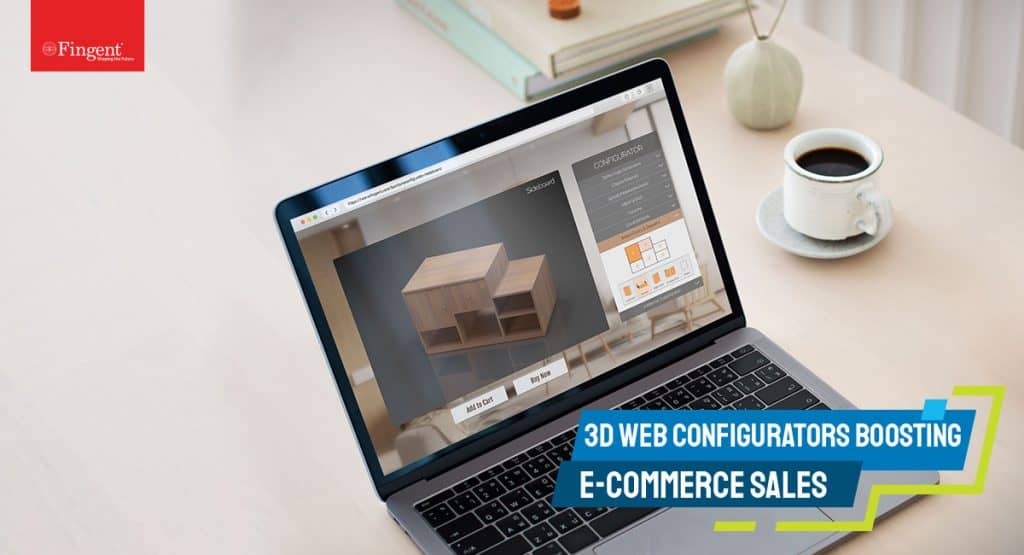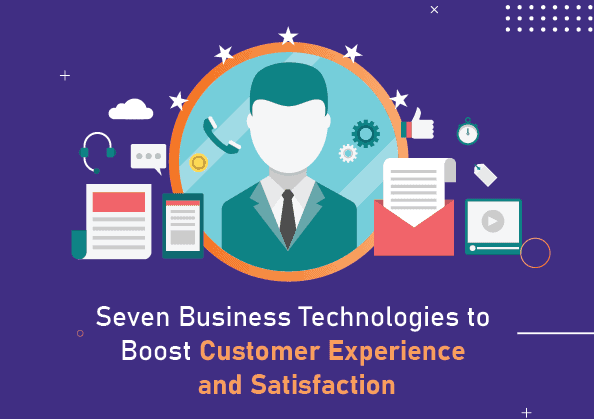Tag: Business Continuity Plan
“Innovation is critical to the future well-being of society and to driving economic growth.”
Prior to the COVID-19 outbreak, several organizations were reluctant to consider digital innovation as a cornerstone of their business strategy. A sea of overnight changes forced them to try and implement a digital-first strategy, without even knowing how they can effectively choose and adopt digital tools. Data shows that 94% of executives are unhappy with their firms’ innovation performance, despite spending heavily on incubators, accelerators, and internal venture capital. These businesses are unable to create any impact because their efforts are stifled by some of the biggest barriers to innovation, such as lack of organizational support, inability to foresee the long-term rewards offered by customized solutions, and poor process and data management, among others.
In this post, we’ll briefly examine five major innovation hurdles faced by business leaders today and how these challenges can be busted.
Read more: Top 5 Organizational Imperatives for Business Leaders to Become Winners in the New Normal
1. Organizational Resistance
True digital innovation embraces an organization’s leadership, work culture, technology, and business practices. Many business leaders struggle with digital innovation because it appears to oppose their established ways of working, which they have been practicing for decades. It’s hard to get innovation right within a rigid organizational structure where mistakes cannot be tolerated. At the same time, every organization cannot afford to engage in costly and time-consuming experiments that will intervene their daily show.
Overcome Resistance Through Outsourcing
By strategically outsourcing innovation, business leaders can reduce the experimental cycle times and lower the associated risks and costs. Consider the insurance law industry that processes massive amounts of legal documents and insurance data on a daily basis. A typical employee compensation claim would take nearly three years for final settlement, after all the paper sifting, consulting, probing, and finalization. The average case settlement time costs a carrier close to $85k. Sapra & Navarra, a leading Californian attorney wanted to put an end to this enigma. They outsourced their technology requirements and developed an AI and Machine Learning program that enhanced and accelerated the activities involved in processing workers’ compensation claims.
The result: 50% decrease in average total claim costs, claim cycle time, and associated personnel costs.
Outsourcing your digital innovation project gives you access to top-rated specialists in various technologies such as AR, VR, IoT, automation, blockchain, mobility, enterprise content management, data analytics, and business intelligence. Outsourcing saves your cost and time and makes your business scalable for future needs.
2. Disorganized Innovation Process
Several organizations fail to formulate a process to guide sustainable innovation. Companies rely on serendipity instead of formally analyzing their strengths and weaknesses around innovation, thereby failing to understand and define their expectations. This prevents business leaders from broaching innovation as an enterprise-wide responsibility. Innovation thrives in an open and supportive environment where employees are assured of recognition and professional growth.
Ways To Adopt A Systematic Innovation Process
Business leaders and managers can assist with the process of innovation by:
- Understanding the operational details of innovation projects and keeping a close eye on the project performance.
- Establishing a learning-focused environment that encourages employees to speak up and try new ideas.
- Ensuring the selected ideas are well-evaluated and are based on their organization’s protocols.
- Responding to opinions and queries and motivating employees to ask the right questions.
- Paying rapt attention to customers’ needs and specifications and utilizing technology creatively to lessen their woes.
To put it simply, a systematic innovation process should have three components: a worthy problem to solve, a technology that helps develop the solution, and a business model that generates ROI from it.
Read more: Prepare For The Future of Digital Innovation with Fingent
3. The Rift Between B2B And B2C Tech
Just like how B2C customers rely on Amazon to buy their household essentials, B2B customers are also switching to digital tools for researching and buying products. Several factors, such as decision-makers, influencers, higher price points, competing sales channels, and a growing range of product lines and specifications come in the way of B2B purchasing decisions. This has caught B2B sellers in a maze of innovation challenges. More than anything else, B2B companies need to become more customer-centric to stay ahead of the competition.
How B2B Companies Can Apply Innovation
- Have a solid omnichannel strategy, with a specific focus on improving mobility. This will put better tools in the hands of B2B sales teams.
- Evolve from legacy organizational structures. The leadership should bring more clarity to digital roles and define the ownership of digital initiatives.
- Outsource digital capability building requirements to a trusted offshore software vendor. Migrate to the latest technologies like the cloud and update your legacy enterprise software to drive your innovation efforts.
Read more: Cloud Migration – Essentials to Know Before Jumping the Bandwagon
4. Too Much Focus On Short Term Gains
Building the gap between digital innovation leaders and laggards is a time-consuming endeavor, which can pay off in the long term when done rightly. Several enterprises go for ready-made, canned technology solutions in a race to become digital. Such businesses tend to lose out big as they fail to prioritize the long-term gains such as scalability and adaptability that are more crucial in their growth journey. Custom software, that is purpose-built for your business, is the best digital innovation solution that can stabilize and scale your business growth.
Reaping Long Term Rewards With Custom Software
With a solution tailored to your industry’s requirements, it becomes easy to integrate software into your organization’s daily routine. Off-the-shelf software meets only 60% of your operational business needs.
Our customers reveal the long-term benefits of adopting custom software:
- 93% of our clients saw a decline in inefficient tasks after implementing custom software
- 91% agree that tailored software solutions have increased their productivity
- 77% could reduce manual data entry errors after replacing their off-the-shelf software with custom applications
- 76% of our clients reported increased ROI
Read more: Ensuring small business success with custom software
5. Innovation Has To Be Managed Only By C-Level Execs
More than technology, the success of the digital transformation is determined by the attitude of people across the organization. According to Harvard Business Review, “when leaders think about investing in technology, they should first think about investing in the people who can make that technology useful.” This is where the main implication lies. Digital innovation success depends on your ability to adapt to the changes rather than the technology itself.
Driving Innovation Forward
In these times of change, it’s important to count diverse perspectives, talents, thoughts, and ideas to drive innovation forward. Business leaders should invest in raising new skills, think cloud and mobile-first, build personalized experiences using data, and tie all the digital channels to offer customers a unified experience.
Read more: Future-proof your business with 5G, Edge Computing, and Cloud
Start Your Digital Innovation Journey With Fingent!
Have you started your digital transformation journey yet? If not, there’s no better time than now. We’re helping businesses build robust custom solutions that can sustain their innovation model and boost their customer experience even in the wake of a black swan event. The way each business looks at innovation could be different, but what ultimately matters is how your innovation model integrates with your business strategy, long-term growth plans, team culture, ROI, budgeting, market value, and above all the impact on your customer. Are you ready to take a free assessment?
Drop us a line and our sales team will contact you shortly.
Stay up to date on what's new

Featured Blogs
Stay up to date on
what's new



Talk To Our Experts
2020 has proved beyond doubt that technology partnership is an essential element in the creation of a successful business. Sticking to a DIY strategy may sound good in the wake of economic upheaval. But honestly, no business wants to “just survive.” Every business in every sector wants to thrive and stay relevant despite the challenges.
In recent times, technology keeps changing far too quickly. Missing the first door of opportunity may mean greatly diminished market potential. On the contrary, partnering with a technology company offers the quickest way to ensure an impactful presence in your market segment.
Do you own a business? Or are you an entrepreneur with multiple companies? Is the concept of a “technology partner” too abstract for you? If so, we are here to help you understand why partnering with a reliable tech company is the need of the hour. Here’s also highlighting the benefits of such a partnership.
Read more: Technology Investments: How to gain maximum value?
Why is Partnering with Tech Companies the Need of the Hour?
Most businesses around the world are recovering from pandemic-related economic hardship. Although this has scared many, it is clear that businesses need to become more ‘upheaval-ready.’ Partnering with a tech company can make your business ‘upheaval-ready’ while elevating your business. Let’s now consider specific reasons.
1. Apprehensive about future challenges?
During the pandemic, you may have had to adapt to new ways of doing business. There is a high probability that this change may not end here. The next few years may experience aftershocks due to health and safety standards and economic fallouts.
Thankfully, new technologies and new ways of using old technologies can help you meet your current and future business needs. What do you implement though and how in the world will you go about doing that? This is where partnering with a tech company can be a boon.
2. You need specific talent
Consider this scenario: you have new projects that require a specific skill set that your current team does not possess. On the other hand, it is also not the right time to hire. Plus, you do not have the time or resources to look for such talent.
Additionally, bringing in new talent that would require extensive training can be way more exhausting than it may seem. What is your best option? A tech partner! Your partner will be able to provide the needed skillset. This may prove to be more cost-effective and less exhausting than hiring and training a new candidate.
3. New technology seems painfully elusive
Do you feel that your competitors are pushing ahead with the latest technology while you can’t even begin to wrap your head around it? Are you anxious that your business will suffer if you do not adopt digital transformation immediately?
If so, worry no more! A partnership with a technology company is exactly what you need to give your business that edge that seems so elusive.
Read more: Why Software Development Outsourcing is a Smart Move Now?
Benefits Of Partnering with Technology Company
Collaboration is key to creativity – Walter Isaacson
Collaboration that brings in creativity and spearheads agility is what you need right now. Here are some direct and indirect benefits of tech partnership:
1. Provides a new set of eyes backed with experience
Does your business require multiple levels of testing and repeated proofreading and fact-checking stages? Do you occasionally require external evaluation to identify issues you cannot see immediately? Your tech partner can do all of these for you. Also, they may be able to provide unique solutions for your specific needs.
Allowing a tech partner to take care of these needs can free your time and resources to stay focused on what you do best.
2. Offers skillset and solutions as and when you need
Business suffers when problems go unidentified and unsolved. Partnering with the right tech company can help you identify and solve such issues before they snowball.
The best part of this partnership is that you can hire them on your terms. It can either be short-term or something that you do yearly.
3. Cost and labor savings
Cost and labor are major points of consideration in running a profitable business. Not all businesses can afford the latest tech advancements. There is no arguing however that organizations need the latest technology to run their business efficiently and cost-effectively.
A tech partner can help in managing communication and resource organization by eliminating manual processes. It can reset repetitive and simple data entry tasks that can consume precious time. Time saved is money saved!
4. Reduce risks
No business can afford a technology failure as it can pose a huge risk. A tech partner can insulate your organization from those risks.
5. Increased employee performance
Technology helps employees do their jobs more efficiently. You cannot afford to miss important compatibility and workflow improvement opportunities in this age. Your tech partner can help integrate your network to improve employee performance. This automatically leads to improved business performance.
6. Opportunity to expand your tech expertise
Not all businesses can afford technical expert knowledge in-house. Partnering with a tech company allows you to complement and broaden your organization’s existing technical expertise.
7. The partnership is more cost-effective
Paying employees 24/7, 365 days for IT support is expensive. It is cost-effective to outsource the IT support team. Partnering with a tech company can give you greater access to experienced tech support when you need it.
Read more: Understanding Managed Services for IT: Why it Matters?
Why Fingent Can Be Your Ideal Tech Partner
Fingent brings a wealth of technical expertise coupled with business experience to our partners. We draw on decades of engineering expertise to develop unique solutions for each of our clients.
At Fingent we maximize the potential of your business with tech expertise backed by sound business sense. We can empower you with the benefits that technology can offer to compete in a global arena.
Fingent has both the necessary certifications and experience you need. Our staff is diversified with specific tasks but is kept informed about each level of the project. We stay abreast of all technological advances.
We have worked with a wide range of clients and have the skills needed to partner with new industries. We believe that technology can enhance and enrich all walks of human existence.
Visionaries at Fingent, top custom software development company can help you reimagine the way you work. We can help kickstart your digital transformation journey to bring you into the future – a thriving and stable future. We are confident that you will appreciate all the strategies we create to help you. Give us a call and find out for yourself.
Stay up to date on what's new

Featured Blogs
Stay up to date on
what's new



Talk To Our Experts
Revolutionizing Home Improvement Business With 3D Web Configurator Technology
COVID-19 pandemic’s impact has ushered in a dramatic shift in the behavior and preference of customers. However, this shift was not restricted to customers alone. Social distancing and isolation protocols put industries like home improvement in a state of dilemma, as their business depends highly on showcasing products to customers in a physical space, preferably in-store. Almost overnight, businesses like interior designs and home decor had to adapt and adjust how they presented their products. Today, home improvement companies are increasingly relying on 3D web configuration technology to ensure that their customers gain personalized product experiences and can shop from the comfort of their quarantined couches.
Forbes reports that by replacing static 2D images with interactive 3D models, businesses have gained a 40% increase in online conversion rates and a 30% improvement in average sales prices. Moreover, they also managed to reduce online returns by 80%.
As a customer begins experiencing the ease, personalization, and speed of online shopping, there is no going back. Businesses can leverage this cemented habit when they use a 3D web configurator. In the world of e-commerce, 3D web configurators are already a breakthrough. Unquestionably, it is the need of the hour!
Like e-commerce, the home improvement industry is also a crucial beneficiary of 3D web configuration. This article discusses how the home improvement industry uses 3D web configurators to enhance customer engagement and accelerate business growth.
How the Home Improvement Industry is Utilizing 3D Web Configuration
According to Statista, the projected total home improvement sales in the United States will touch 510 billion USD by 2024. Such an exponential increase is only made possible by the power of 3D web configurators. From sofas to paints and bathroom essentials like faucets and sinks, there are various configurations available today.
3D visualization software can help customers project a 3D model of the product against the background of any room. This does not mean a customer must invest in special equipment. Instead, they can view using their phone camera.
For instance, if a customer wants to see how a beige wardrobe would appear in their bedroom, they can simply point the phone camera and project that wardrobe onto the background. Plus, a 3D configurator allows customers to customize the product before they click on the “purchase” tab. So it is no surprise that 3D visualization software can build your customer’s confidence in their purchase.
Read more: What are 3D Web Configurators? How do they Boost E-Commerce Sales and Drive Customer Satisfaction?
3 Ways 3D Visualization Helps the Home Improvement Industry Thrive
3D visualization gives your customers an overall impression of their living room. It can provide an in-depth view of both real and surreal aspects. In other words, it will help you increase professional accuracy as you incorporate your customer’s requirements.
Here are the three advantages that 3D visualization can bring to the home improvement industry:
1. Color Match
Most people tend to research products online before buying. Besides, homeowners prefer to select their wall color from the comfort of their homes. An excellent 3D configurator case that can influence a consumer to move from the consideration stage to the purchase stage is Dulux. Using 3D visualization helped them to provide a better user experience across various channels and devices. In addition, it benefits both the customer and the consultant as they can pick and choose from all available colors.
The primary goal of 3D configuration is to help customers visualize how they can decorate their homes using various combinations. It generates accurate visualization of the selected paint on the walls and ceilings. Plus, it allows a shopper to import, tweak, process, view, and save the final visualization. This is an excellent feature for tradespeople and DIY renovation enthusiasts as they spruce up their homes.
2. Engaging Visualization
Home improvement businesses can use 3D configurators to educate customers about their products. It enables them to blur the lines between the consideration stage and point-of-sale decision-making. For example, 3D web configuration technology will let shoppers measure what size of furniture would look best in their living room. Once they decide on the size, the configurator could narrow it down to other furniture features and help customers make purchase decisions.
A 3D web configurator can do more than sell a product. It enables a business to be transparent and open about its products in detail. This assures the potential customer and increases decision-making comfort whether they commit to buying or not.
When customers cannot visit a store in person, they may want to inspect the purchase in detail. Having 4k zoom on your product page allows your visitors to scrutinize your products, feel the texture, and choose the right shade of color. This can be made easy when you add 360-degree images. Interactive 3D models can significantly improve your web session duration.
Typical case: Timothy Oulton
Timothy Oulton is a British handcrafted leather furniture brand. From 360-degree views to detail shots, it uses various 3D configuration features to create an engaging product page experience.
3. Interactive Imagery
With more people shopping online, having a 3D interactive website has become increasingly important. It can give your shoppers a degree of interactive imagery that photographs cannot render. You can achieve this by combining the background and the product to create an in-context image. Those combinations will help you convey a certain quality, tone, or mood that will influence a shopper’s perception of your product.
True, you can have multi-angled images, but you cannot rotate them. However, 3D product rendering enables immersive interaction between the customer and your product. Now, a shopper can rotate, enlarge, or shrink the product to view it from all directions. Such context enables shoppers to visualize how your product looks in a real-life setting.
Typical case: Neptune
A British interior design and lifestyle brand, Neptune, designs and creates furniture, lighting, and accessories for the entire home. They use context images to tell a story. Their product pages are filled with high-quality room scenes that highlight the beauty of their products.
Tangible Results of Implementing 3D Web Configurators
3D rendering is a distinctive way to present your home improvement products to your customers. It is less expensive in part because it can be used throughout the process of design and sale. Plus, it nudges them along in their buying decisions.
3D web configurators can help increase your customer engagement, boost online sales, and reduce returns. Thus, more businesses are likely to embrace the power of 3D configuration to ensure business continuity during the pandemic and beyond. So, yes, product visualization is the new reality of the future. But, are you ready for it? If your answer is yes, get in touch with us software development experts and help us give you a 3D view of your business’s success!
Stay up to date on what's new

Featured Blogs
Stay up to date on
what's new



Talk To Our Experts
How Organizations Can Embrace Transformation and Expedite Their Growth
From remote working and e-learning to sales and customer service to more critical cloud infrastructure and security, the COVID-19 pandemic has accelerated technology adoption across several key domains. The pandemic has made digital transformation crucial for business growth across various industries. Satya Nadella, the CEO of Microsoft, puts it that “We’ve seen two years’ worth of digital transformation in two months.”
That said, companies will have to change their mindsets and adopt new strategies to stay relevant and competitive in future. Here are six ways you can adapt to the new normal and taste business success.
Read more: How Business Owners and Leaders Can Set up a Successful COVID Exit Strategy
1. Adapt to change
Change is the only constant and more so today than ever before. Change is happening at a faster pace and is very crucial for small businesses. Today, old and traditional methods of winning clients and serving them do not seem to fit. The list of things you need to change may be long and only growing. Instead of reacting to these changes, the best approach is to embrace them and treat them.
So, when you treat the problem, you employ change to work with you and not against you. People are more likely to accept strategic changes now, especially if the initiatives are focused on improving their lives.
Bring agility and innovation to your business by implementing a quarterly strategic planning and review process. It will allow you to remain focused, actionable, and agile by adopting new learnings.
While you are in the process of adapting to changes, consider a few questions that you need to ask yourself.
- What can disrupt my business and change everything?
- How can I lead that change?
- How can I ensure that my business stays relevant and profitable in the next five years?
Read more: Top 5 Organizational Imperatives for Business Leaders to Become Winners in the New Normal
2. Customer always comes first
As consumer needs keep evolving, you have to think of ways to meet the new supply and demand to stay relevant and competitive.
Social distancing due to the pandemic has left many businesses struggling—for instance, physical retail stores, manufacturers, automotive, banks, etc. Many product-based companies face significant issues related to manufacturing and distribution. Service-based companies are also suffering due to poor customer demands. In short, business models should be revamped so that they are immune to new challenges.
The pandemic has even changed customers’ needs and preferences.
One of the best ways is to engage in a conversation with your clients to identify opportunities. You could probably start by asking a probing question at the end of the conversation with your client. You may also conduct surveys or quarterly client advisory groups to follow a more formal process.
To stay relevant, you will have to prioritize customers’ needs and problems. It is imperative for future growth and innovation.
View Infographic: Business technologies to boost customer experience and satisfaction
3. Implement automation wherever possible
Working smarter means hiring and collaborating with the right talent. Encourage teamwork for removing the bottlenecks and hurdles. It will translate to more revenue with the available resources. Effective workplace collaboration will also boost your team’s morale and reduce lay-offs.
Leverage technology and systems to streamline your business and allow it to run smoothly. According to Gartner, by 2024, businesses will see a 30% reduction in their operational costs by combining hyper-automation technologies with redesigned operational processes.
Identify processes that can be automated and evaluate how automation will enhance your customer service and experience.
Read more: What Makes a Business Process Apt for Automation
Automation of repetitive, routine, and mundane tasks saves your workforce’s productive hours and spares them for more crucial tasks. Automation enhances your organizational efficiency and offsets growth investment.
4. Speed is the key to sustain in 2021
The pandemic has made companies rethink their conventional organizational models and pushed them to adopt new ways of working at speed. Flat structures empowering decision-making are replacing the traditional management-led hierarchies. It enables companies to perform with improved speed and precision. For instance, PepsiCo adopted newer working models to enable fast and easy access to their products during the pandemic. Within 30 days (from concept to execution), the company launched two direct-to-consumer (D2C) websites.
5. Adopt digital commerce
The pandemic has spurred digital commerce like never before. Deloitte’s 2020 holiday retail survey reports that contactless shopping experiences enjoyed a huge spike in demand during the holiday season last year. Over 73% of shoppers planned to have orders delivered to their doorsteps as against 62% in 2019.
Read More: Contactless Retail Delivery Software – How Retailers Can Revive Sales While Adhering To Social Distancing Norms
Companies should accelerate and optimize both B2B and B2C digital commerce channels by developing custom retail software solutions to enjoy the benefits of e-commerce sales and ROI.
As customers demand efficiency and speed, organizations must give precedence to customer experience to overcome competition.
In 2020, Adidas established itself as a top digital commerce player targeting $4.9 billion in online sales, almost 12% of their overall business. In the future, the company expects it to rise to 25%. Also, they were quick to recover from the pandemic impact with an increase in online sales during the lockdown.
Read more: 5 Transformative Trends Ushered by B2B E-commerce in Healthcare and Life Sciences
Fingent leverages innovative and emerging technologies to help digital retailers and e-commerce businesses
Fingent custom software development experts helps retailers build custom retail software solutions, e-commerce, and mobile commerce apps that help you deliver exceptional customer service and experience, just like your physical retail store. Fingent helps retailers and e-commerce brands develop Augmented Reality-based solutions that allow their customers to preview objects in 3D. Using AR technology, both online shoppers and in-store buyers can choose their preferred products without the hassle of buying the wrong ones. We enable companies with an e-commerce presence to build AR applications through web platforms (WEB AR), avoiding the need for separate mobile apps.
Read more: Technology Investments: How to gain maximum value?
6. Ensure customer data privacy and protection
Data transparency is imperative. With the rise in going digital, the total amount of data created, captured, and consumed will more than double by 2024 globally. A 2019 Factual survey reveals that more than 50% of the US smartphone users will be ready to share their geolocation details with a service provider only if they are aware of how the information will be used. When customers realize the benefits of sharing personal data, such as online behavior, shopping history, mobile app usage, or geolocation tracking and trust that their data will be protected, they will be more willing to share it.
Jersey Mike’s Subs, a US sandwich chain, has a transparent privacy policy that lets you know which customer data they collect and how it is stored and used. Approaches like these that give consumers clarity and control over their personal information will define personalization and enhance customer experience.
Consumer data privacy acts such as General Data Protection Regulation (GDPR) for the European Union (EU) and European Economic Area (EEA) and the California Consumer Privacy Act (CCPA) aim at ensuring consumer privacy rights and data protection under the respective regional, state, and federal laws. These acts allow consumers in the respective regions to see all the information companies have saved on them and how the data will be protected and used.
We help ensure smooth business transformation
As we try to recover from the crisis, it is essential to consider what the future looks like for your business. Your organization must adopt new technologies, innovation, and new practices to ensure a smooth business transition. It also helps you meet the growing customer demands.
Reach out to us and let us help you accomplish a seamless business transition through modern technology adoption.
Stay up to date on what's new

Featured Blogs
Stay up to date on
what's new



Talk To Our Experts
10 Services Offered by Fingent to Prepare Your Business for the Future of Digital Innovation
- Introduction
- Robotic Process Automation
- Business Continuity Planning
- Contactless Services
- Custom LMS | eLearning
- Business Process Re-engineering
- Reality Technologies
- Data Analytics
- Internet of Things
- Mobile Technologies
- Cloud Computing
- Innovation beyond digital transformation
Introduction
It’s been more than half a year since we started battling the global pandemic COVID-19. While it shows no sign of waning and continues to dwindle economies, business leaders are still exhibiting a streak of optimism. Thanks to digital technology and infrastructure!
The American management consulting firm McKinsey states that business executives expect profits and consumer demands to rise within the next six months. However, households across the globe have reduced their spending due to low income and savings. This poses a challenge for business sectors such as banking, retail, telecom, healthcare, and utilities. The organizations belonging to these sectors have to find new ways to support customers as well as preserve shareholder value in these ambivalent times.
Read more: Fingent’s response to COVID-19 business implications
In spite of several unsuccessful attempts to curb the virus spread, promising vaccine tests give us hope. The good news along with it is that businesses are managing to meet their urgent requirements and are optimistic for a time when all employees can return to work safely. Business leaders need to focus on supporting their employees by building up trust and providing clear communication.
If not anything, the pandemic has taught us the necessity of digital innovation and management. The business-as-usual approach is bound to fail in these difficult times. Business leaders have to make fast decisions, use technology in new and different ways to improve productivity and accelerate digital innovation. Organizations that embrace technology and new tools to reinvent business processes will see better results. This blog enlists 10 ways by which Fingent can help you re-engineer your business processes and overcome the challenges efficiently.
1. Robotic Process Automation
In light of what’s happening, the demand for automation has fundamentally increased simply because the business dynamics have changed in various industries. Since most employees have to work from home, repetitive and data-intensive processes could be handed over to Robotic Process Automation. Once employees are freed up from performing mundane tasks, they can concentrate on other important operations that require cognitive skills.
The payroll, onboarding and offboarding processes in HR can be automated using RPA technology. In the banking sector too, RPA bots can fasten activities such as loan application processing, account opening and make them error-free.
Read more: How HR and Banking Sectors can Benefit from RPA
Fingent combines technologies like Machine Learning and AI with RPA to design smarter processes for businesses. Our focus is on utilizing RPA software bots to enhance the cost-effectiveness and efficiency of business processes. We help companies to automate business processes by identifying areas that require automation, deploy the most appropriate tools, and provide the necessary maintenance and support.
2. Business Continuity Planning
A business continuity plan is crucial to ensure the effective recovery of organizations from a disaster. From conducting virtual site inspections to document collaboration to human resources and payroll management, Business Continuity Planning helps keep track of all your crucial tasks.
Fingent utilizes a wide range of technological frameworks like SAP, AWS, Microsoft technologies, public cloud services, and custom software solutions to help you come up with a strong business continuity plan. Our Business Continuity Planning (BCP) services enable you to make faster decisions, reduce costs, and retain customers. We help you create and implement a sustainable business model that allows you to keep pace with the rising customer demands.
Read more: How SAP Supports Effective Business Continuity Planning
3. Contactless Services
COVID-19 has changed customer behavior w.r.t what and how they buy. This shift has given rise to a demand for contactless services. The demand for smart deliveries, self-service facilities, and other technologies such as QR codes, mobile payments, tap-and-go are expected to rise.
Read more: Contactless Services: The New Normal in Retail
Maneuvering these challenging times may seem daunting. But Fingent can help you turn the tables with our innovation capabilities and technology consulting. We guide organizations to expand their existing set of offerings and capture new markets.
Fingent top software development company, will help you bring your brick-and-mortar store online by developing highly responsive, secure, and scalable ecommerce CRM solutions, customize your existing application to integrate contactless payment features, configure new offers or discount codes and also helps you leverage AR/VR technologies that allow customers to view your project sites or prototypes.
4. Custom LMS Development | eLearning
According to a recent study, 42% of organizations in the US have increased their ROI through eLearning. Over 90% of students say that they prefer eLearning to classroom training- a trend created by the COVID-19 forced lockdowns. eLearning systems are highly beneficial in times of a global pandemic like COVID-19 to ensure uninterrupted learning.
Fingent helps schools, universities, colleges, educational institutions, NGOs, and training centers to develop customized LMS platforms that come with aptitude-based smart learning tools.
Read more: E-Learning Taking A New Front: How Can LMS Technology Help
5. Business Process Re-engineering
Business process re-engineering involves the fundamental rethinking and redesigning of processes to achieve significant improvements in performance, efficiency, and alignment of processes with organizational strategy. Fingent’s BPR services enable enterprises to revamp existing business processes to improve productivity, quality, and cycle time, especially during a crisis.
Here’s the difference that Fingent’s BPR brings to your table:
- Re-engineer and optimize your processes from the ground up
- Eliminate redundant processes and enhance workflow efficiency
- Coordinate and integrate multiple functions/ teams quickly
Business process reengineering offers nearly all benefits- increased revenue, improved customer service, reduced cost, higher employee retention, faster processing time. Though the risks are considerable, the crisis presents an opportunity for your business to build resilience and reshape your future roadmap by leveraging BPR.
Read more: Business Process Re-engineering: Facing Crisis with Confidence
6. Reality Technologies
The latest advancements in Augmented Reality and Virtual Reality technologies are helping businesses explore new ways to reach customers and take their innovation efforts to the next level. Perkins Coie LLP reports healthcare and medical devices as one of the top potential growth areas for AR and VR technologies. Visual-based immersive learning experiences, virtual events and conferences, virtual showings and site tours, etc. ensure sustainability, safety, and remote collaboration.
Fingent helps accelerate your move to new and emerging technologies such as Augmented Reality, Virtual Reality, and Mixed Reality.
Read our case study: The Future of Communication and Security Using Augmented Reality
7. Data Analytics
The COVID-19 pandemic has disrupted supply chains and has brought about dramatic changes in customer behavior. Given the current volatility, it is nearly impossible to track real-time changes in consumer mannerisms and aptly respond to them. Fingent offers Predictive Analytics from SAP as well as other data analytics solution providers that can help you detect hidden trends and make quick decisions.
Sectors such as healthcare, retail, sports, insurance use predictive analysis in various ways. Fingent’s data analytics services guide you towards increased ROI by turning data into valuable insights.
8. Internet of Things
Business executives believe that the disruption brought on by COVID-19 will cause an increase in the demand for IoT devices. Robust 5G networks are necessary to realize the power of IoT. Join forces with Fingent to leverage the benefits of IoT in your business. Gear up for IoT with our vast portfolio of technologies that can help you create new IoT processes and manage your devices. We provide customized IoT services to meet your unique business needs. Our cloud-based IoT data management solutions help you gather insights from your IoT data.
9. Mobile Technologies
As stay-at-home and social distancing are the new norms, mobile technologies can keep business running. At Fingent, we utilize leading mobile technologies to support businesses. Being scalable and secure, our mobile solutions deliver value to your customers.
So you want to build an app, but don’t know how to get on with it? While finding the right mobile app development company may seem an obvious answer, you first need to get your requirements on paper. Fingent offers a mobile app specification template that can help you define the scope and functionalities of your app. This erases ambiguity in the development process and keeps all stakeholders on the same page.
Click here to download our free mobile app specification template!
10. Cloud Computing
The Cloud has proved to be a lifesaver for businesses whose offices are closed and employees are scattered across various locations. Those who were skeptical of the Cloud are now changing their opinions and have come to benefit from the flexibility that it offers.
Fingent’s expertise in cloud architecture models has helped many organizations realize their goals. With our proficiency in various cloud platforms such as AWS, Microsoft Azure, IBM, and Google we aim to make organizations flexible and agile. We also provide cost-effective cloud application development solutions that can be easily implemented in your current infrastructure and tailored to suit user requirements.
Innovation beyond digital transformation
As the pandemic seems to gather strength, organizations scramble to find ways to keep business running. Business leaders have to prepare for recovery by supporting their staff, establishing effective communication, and balancing costs. If nothing else, these turbulent times have brought to light the significance of digital transformation. By resorting to innovative digital technologies like the ones mentioned above, businesses can reinvent themselves and keep going.
Read more: 7 Ways for Your Business to Overcome the COVID-19 Aftermath
We at Fingent focus on supporting businesses by equipping them with these smart technologies to ensure business continuity. Leveraging smart technologies, Fingent can help you understand the pulse of your customers and make the necessary changes in your business models. It has become increasingly clear that given the serious health implications on people returning to work, creating a post-pandemic organization would take longer than earlier perceived. Companies have to seize this opportunity to build new capabilities like remote work environments, virtual collaboration, automation, eLearning, eCommerce, and so on.
Our business solutions have already helped various industrial sectors solve problems and eventually succeed. Fingent top custom software development company can help you capitalize on this opportunity to create a digital innovation strategy. Contact us to know more.
Stay up to date on what's new

Featured Blogs
Stay up to date on
what's new



Talk To Our Experts
How SAP Solutions Help with Business Continuity Challenges
Every organization needs a business continuity plan to carry out its critical business as usual, especially when the area where it operates is affected by a crisis like COVID-19. That’s where enterprise resource and business planning suites like SAP comes to your rescue. SAP solutions are designed to help you meet your business continuity goals and ensure that your establishment survives and recovers from a disaster efficiently.
“SAP Help Portal describes business continuity as the efforts to ensure that critical business functions will be continuously available for clients, customers, suppliers, and other entities.”
Business continuity planning, however, is not free of challenges. Varying business requirements can shoot up your investment costs. Consider scenarios such as the installation and maintenance of hardware, software, and data center infrastructure. A simple and cost-effective way to address these requirements will be to use efficient cloud computing solutions instead of massive physical servers. This is where SAP solutions can come handy. SAP Cloud Platform, SAP S/4HANA, SAP Cloud Analytics, SAP Leonardo, SAP Cloud Platform Internet of Things, etc. are only a few of the key services offered by SAP.
How SAP Solutions Help with Business Continuity Challenges
SAP is an efficient technological framework that can be easily incorporated into your existing business structure to maximize the productivity of your business functions. This helps boost the overall growth of your establishment.
SAP offers impressive ways to manage your clients, customers, and business interactions. With the right SAP solutions, you can fast-track and automate your routine processes and dedicate your skilled workforce to attend the core functions. Minimal workforce retention and lower equipment maintenance costs are two of the key benefits of deploying SAP into your business.
Related Reading: What is Business Process Expertise in SAP and Why You Need it
You will gain a high degree of flexibility by integrating SAP in your business structure. This way, you can adjust to the existing as well as imminent changes in the industry smoothly. That helps your establishment to adapt and evolve as per the varying market trends. By storing massive amounts of data on the cloud, you can also significantly reduce the operational and management costs of your business.
Business continuity plans can be very complicated to employ and execute. Traditional ways of managing the recovery infrastructure and testing the solutions can be very challenging and time-consuming. With reliable SAP solutions, all that can be managed flawlessly.
Below are some examples of how SAP solutions can help to solve different business continuity challenges.
Identifying Alternative Sources of Supply
Maintaining the supply chain is one of the most critical aspects to ensure efficient business continuity. Using SAP Ariba allows you to create smart connections with your suppliers so that you can communicate and collaborate with them adequately. The spend management solutions of SAP Ariba also ensure that your business is responsive and responsible, no matter what the crisis is.
SAP Ariba solutions help simplify the procurement and supply chain processes. It enables you to find new sources of supply for better management of your resources in the event of a disaster. At the same time, you can find profitable customers too, and scale your client relationships for superior sales cycles and cash control.
Financial Modeling and Managing Cash Flow
Financial modeling is key to make certain that your business continuity plans are authoritative and adequate. With the help of SAP S/4HANA Finance solution, you can easily manage your financial planning and accounting jobs. The ERP system also allows you to use real-time operational data and end-to-end planning for avoiding redundancy and time lags.
SAP S/4HANA Finance solution also supports accounts payable and receivable, so that you can keep an eye on the cash flow as well as create ad hoc simulations to see new business models or organizational changes. The treasury and financial risk management solutions of the ERP system allow you to integrate cash flow analysis and business planning, including the liquidity planning lifecycle. This is highly beneficial for effective accounts management.
Related Reading: SAP S/4HANA: Redefining End-to-End Solution
Employee Training and Certifications
Staff involvement is another vital element of a successful business continuity plan. However, holding a meeting to train and educate your staff members on the essentials of the business continuity and disaster management plans may not be possible always. This is where SAP SuccessFactors Learning Management System (LMS) emerges as a productive alternative. The online learning solution can simplify the process and adequately instruct your employees about the business continuity plan.
SAP SuccessFactors LMS can make sure that everyone is on the same page through proper training and emphasis on critical business functions. You can create easy-to-understand content for your employees and incorporate personalized and innovative elements to help them get a clear idea of the business continuity plan. You can also manage certifications and documents easily using the LMS software.
Download Our Case Study: Check out how Fingent automated integration between SAP SuccessFactors and SAP S/4HANA.
With a robust business continuity plan laid out using the right SAP solutions, you can have all the critical business data secured and accessible. This helps you recover from the disaster quickly and manage important business functions without affecting your customers or business reputation.
Fingent helps enterprises to frame robust business continuity plans leveraging SAP, S/4, and intelligent enterprise platforms. Our team includes members who are part of SAP’s core engineering team, who can provide consulting, advisory, implementation, integration, support, and monitoring services to ensure business continuity. Get in touch with us to learn more about our services.
Stay up to date on what's new

Featured Blogs
Stay up to date on
what's new


































































